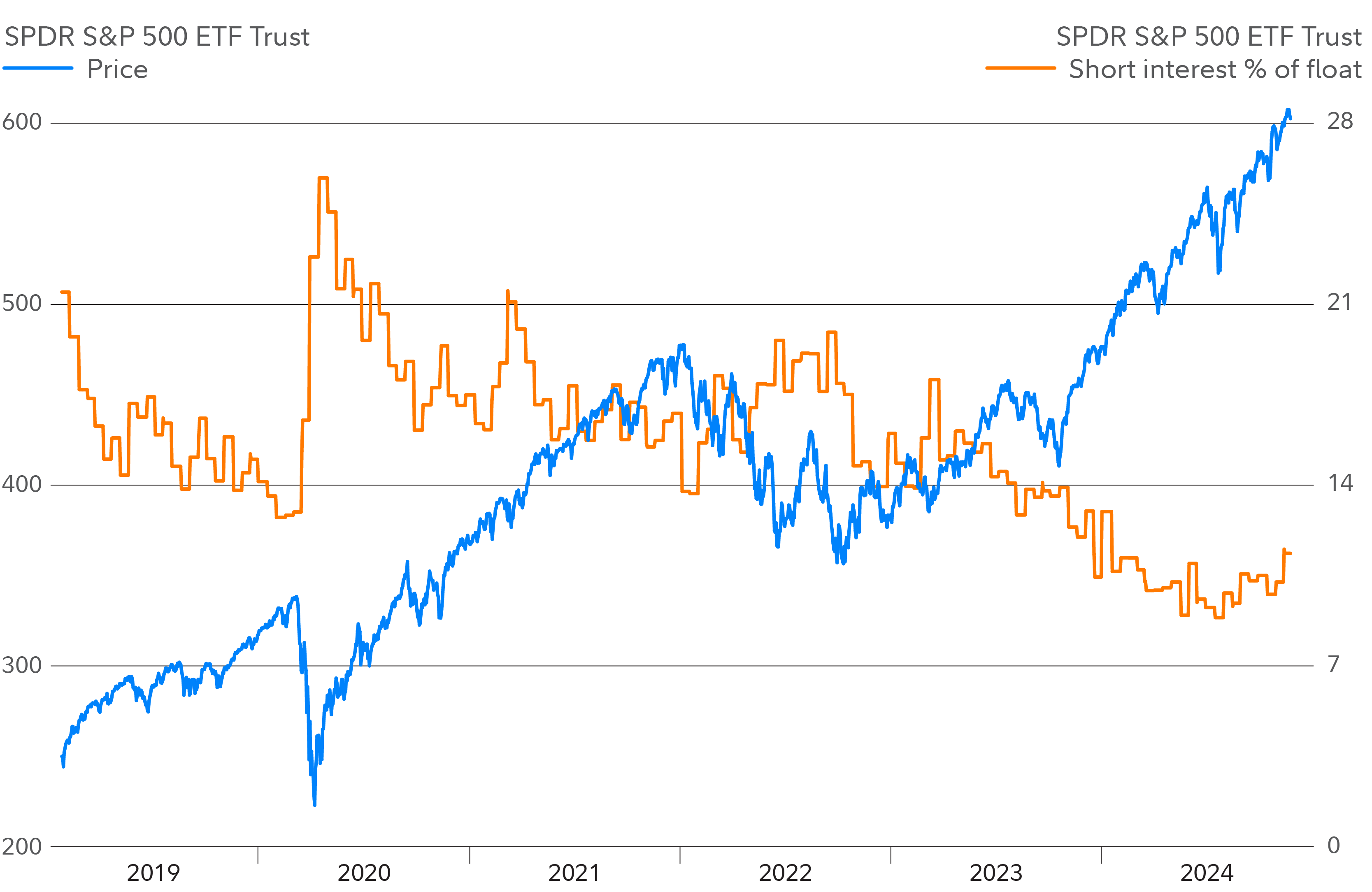If you are wondering which stocks have been the biggest targets of short sellers, here's the list of the 10 US-listed stocks with the highest short interest (as a percentage of their shares outstanding), according to data from FactSet, as of December 12, 2024:
- Helport AI (
- ELEVAI Labs (
- Cemtrex (
- Mullen Automotive (
- ENDRA Life Sciences (
- 1847 Holdings (
- AgEagle Aerial Systems (
- Interactive Strength (
- Jet.AI (
- Magnera (
Stocks with relatively high short interest may be viewed generally with a bearish outlook by investors. But is this list as ignominious as it might seem? Not necessarily. After all, Tesla (
Let's dive into short interest and what it might mean.
What is short interest?
Short interest is the number of shares of a particular stock that have been shorted. An investor who is short may potentially profit if the price declines.
It can be considered bearish for a stock to have high or rising short interest. Short interest is commonly expressed as a percentage—the number of shares sold short divided by the total number of outstanding shares. Suppose there are 10 total outstanding shares of a hypothetical stock. If one of those shares is sold short, the short interest as a percentage of outstanding shares will be 10% (1 ÷ 10 = 10%).
Short interest can also be applied to an index, such as the S&P 500 (or a comparable benchmark), to provide a sense of bearish sentiment for the broad market. The short interest chart below of the SPDR S&P 500 ETF Trust (

Note that short interest (as a percentage of float, represented by the orange line in the chart above) has generally been declining since 2020, suggesting a broadly bullish sentiment. It is worth noting that short interest has increased a bit over the past couple months after reaching a multi-year low.
While you can get a general sense of investor sentiment using short interest as applied to an index or comparable security, this measure is more commonly used for individual stocks. If a relatively large percentage of short interest exists relative to similar stocks or to the stock's own historical levels, it may indicate that sentiment is generally pessimistic for the stock.
For example, if stock A and stock B operate in the same industry, and stock A has short interest of 20% while stock B has short interest of 5%, based only on this indicator, market sentiment for stock A may be considered more bearish.
You can find short interest data on the quote page for stocks and ETFs on Fidelity.com.
Why you might care about short interest
As with most indicators, short interest is not meant to be used in isolation. Rather, investors can use short interest to quickly compare sentiment between stocks as well as to evaluate the sentiment for a single stock.
Of course, the amount of short interest does not dictate how a stock will perform. Many companies that have a relatively high amount of short interest can exhibit positive returns. Recall that Tesla was one of the most heavily shorted stocks for years, and since that time its price has increased dramatically and is no longer as shorted.
Moreover, short interest can be a double-edged sword. Consider the so-called short squeeze, which occurs when the price of a stock with a relatively high amount of short interest increases at an unexpectedly fast pace. If the stock is consistently moving higher, and short sellers no longer believe it will decline in price, they may decide to cut their losses and close out their short positions by purchasing the stock. This action can result in temporarily "squeezing" the price higher. If you have a short position (which is a risky strategy in and of itself because the potential loss is theoretically unlimited), the potential for a short squeeze is an even bigger risk to consider.
Many traders will also look at "days to cover" to evaluate a stock's short interest. Days to cover is short interest divided by average daily volume. This can be important because it attempts to measure how long it may take to close out short positions and, consequently, the potential price impact of a short squeeze.
In sum, short interest can serve as another piece of information to assess a potential investment. You should not invest based solely on short interest; however, you can use it to help assess sentiment for a particular investment.


